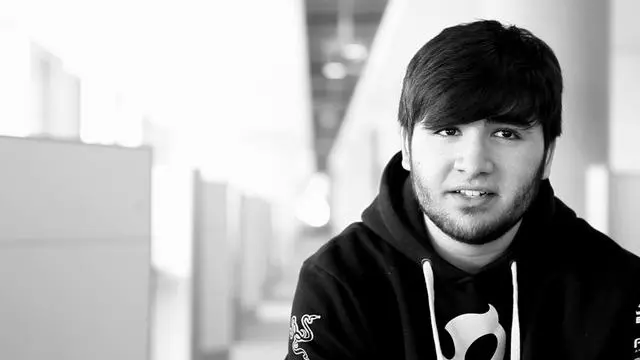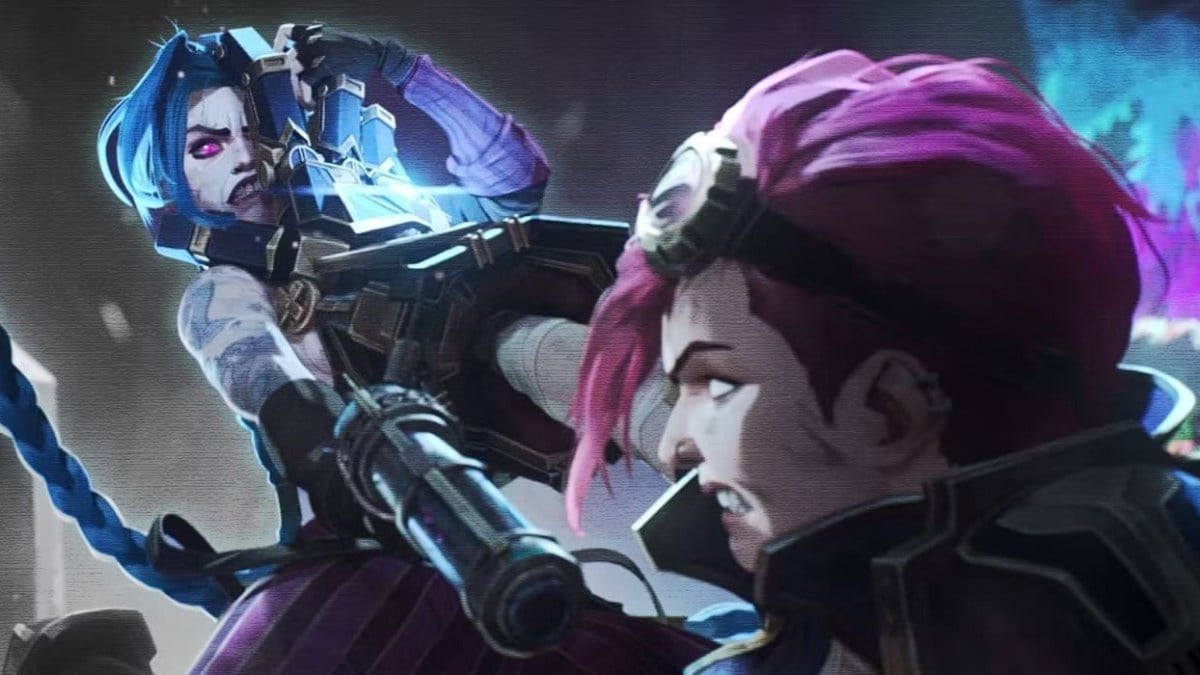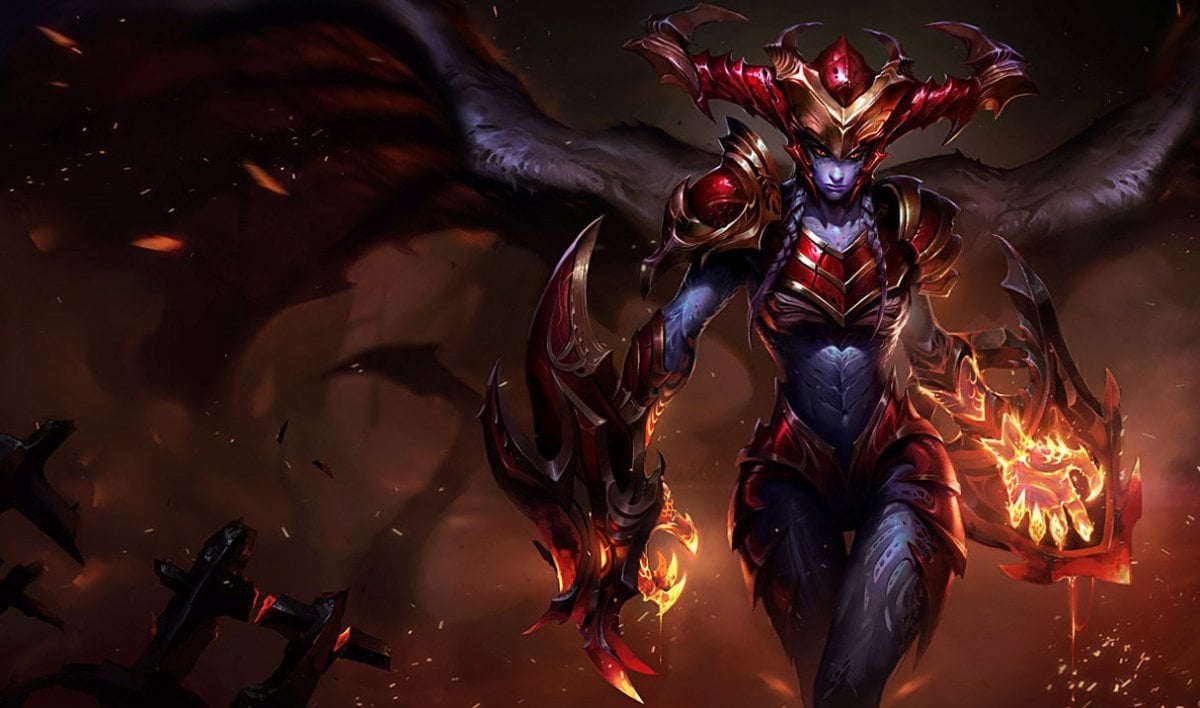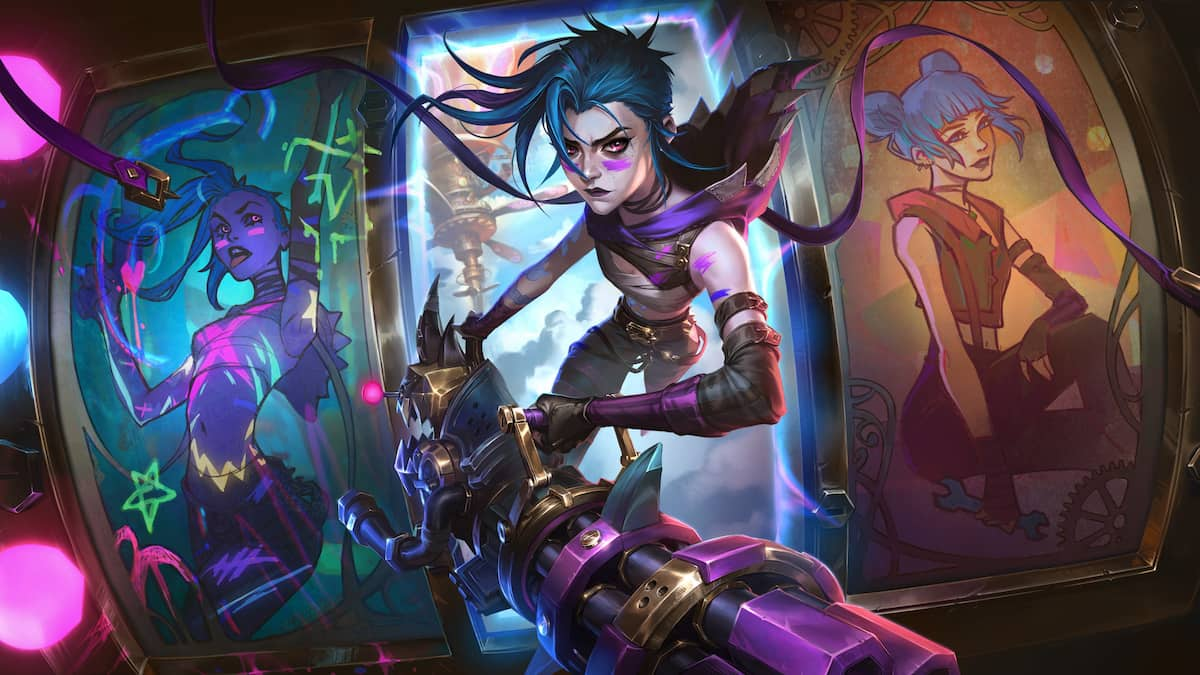Many pro players from the “old guard” of League of Legends, are currently faced with a hard decision: continue competing against hungry talent in the LCS, or return to streaming full-time. Taking a close look at these two options, I wanted to assess their viability and discuss what financial or personal factors might influence the choice to return to streaming. Can streaming offer opportunities for future players as well as old ones? Will its audience continue to grow? Can the streaming community evolve or will it continue to be dominated by a select few?
However, as I began to think about the issue, it became clear that the problems facing pro players (and others working in the business) were impossible to explore in-depth without also starting a serious conversation about Riot itself. Riot Games occupies a unique position as the developer, governing body, organizer, and major broadcaster of League of Legends. Despite the excellent work they’ve done to promote the game over the last few years and raise the profile of eSports as a whole, there is a massive potential for conflicts of interest within the company. As competitive LoL takes its next step forward, it seems important to have this conversation, if only to ensure that the game continues to develop as a genuine “sport” with real diversity in both play and commentary.
Streaming vs. Competitive Play
On Twitch, the most successful streamers are either the most entertaining or the most famous — and everyone else is left with the scraps. The system holds little promise for those trying to break into its ranks. The only easy way to capture an online audience is to steal the spotlight on the big stage: the LCS. Anyone can stream, but only former pros — who can return to the bosom of Twitch with a fan base from their days of competitive play — can make a living off it. Voyboy and Imaqtpie are two recent examples, both high-profile players who streamed in the pre-LCS days, transitioned into competitive play, then returned to full-time streaming at the end of the 2014.
Why did they leave? What motivated them to quit now? Doublelift’s recent interview at IEM Cologne discussed the pressures of competitive play, particularly its effect on relationships, and hinted that this was the motivation for some recent departures. It seems likely that he was referring to Voyboy and Imaqtpie. This gives us one perspective on their decision. Nor is it the first time we’ve heard such opinions. The fact of the matter is that the LCS — and competitive play in general — is incredibly taxing. It demands rigorous scheduling and an almost monk-like devotion to the game. The longevity of a pro player is probably in the ballpark of five years (with a few exceptions). Simply put, you need a backup plan.

But what sort of options exist for pro players who have “run down the clock”? For some, who’ve attracted a fan base while playing in the LCS (like Voyboy and Imaqtpie), streaming is the answer. Others have been able to find their way into casting, coaching or analyst positions. But many are undoubtedly forced to quit the industry and forge new careers for themselves. Increasingly, the LCS has become the proving ground where your future in LoL is decided — regardless of whether you plan to continue in eSports or return to streaming.
When I watched the first few LCS shows, I remember thinking how closely they resembled a real sports broadcasts. All of the details were eerily familiar: the commentators and announcers, the replays and play-by-plays, the talking heads on the analyst desk. Riot took the tried-and-tested formula, fine-tuned by sports networks since the beginning of television, and successfully imported it into eSports. With one move, they effectively cornered the streaming market. Since no one could match them for resources, competition was virtually a non-factor. Almost overnight, the LCS became the “nexus” of the LoL streaming community.

For the most part, I love what Riot’s done with the LCS. By broadcasting competitive games for free — with professional commentary and high production values — they’ve opened League up to a whole new audience, for whom the low-grade world of streaming was unappealing, or a temporary distraction, at best. I count myself among the latter category. Riot has offered gamers a venue where they can compete in front of huge audiences, garner fans, and make a name for themselves internationally. Suddenly, being a professional has become a real option for many high elo players. What’s more, Riot’s efforts have played a significant part in raising the profile of eSports, legitimizing League and other games as “real sports” in the eyes of the world. This year, we saw a university offer scholarships to pro gamers for the first time and a major network even broadcast the World Championships in Seoul. It was a good year for eSports fans.
But, for someone who’s been following League since before the inception of the LCS, it’s been oddly disturbing to see how the LCS has changed the landscape of the game. It’s become difficult for smaller competitions to gather support, especially now that Riot has started the new Challenger series. There’s little scope for major tournaments outside the Riot-organized events — after IPL 5, the IEM events are one of the only remaining outliers. This year, even Korea is being brought in line with the Riot-mandated format as the sister team system is dismantled.
To be clear, I think most of these changes are positive. It’s easy to see Riot as a benevolent “big brother”. One can simply point to a company like Garena, for an example of how bad it could be. It’s also clear that many of the decisions that Riot is implementing in Korea, for instance, are aimed at improving the situation of pro players. Riot’s changes to the LCS format (increasing the number of teams and reducing the total games played) are a great example of this; they’re lightening the load on individual teams and providing more opportunities for others to get into the spotlight. Nevertheless, Riot continues to hold all the cards and that poses a problem for the future of League of Legends.
Conflicts of Interest
Riot occupies the unique position of being the developer, governing body, organizer, and major broadcaster for League of Legends (in North America and Europe). As a result, the degree of control that they exercise over competition is unprecedented — in eSports as well as normal sports. Despite their position of power, one can find little fault with Riot’s actions over the last few years. They have done a huge amount of work to develop an infrastructure within which professional League of Legends can flourish, bringing stability to the scene and expanding the market for eSports in almost every region. Nevertheless, I see three areas where potential problems could arise in the future: (1) game design, (2) competitive structure, (3) broadcasting.

As the above graphic illustrates, each area caters to a different interest within the company: game balance, competitive environment, and profit. I wouldn’t claim to be an expert on the inner workings of Riot Games, but it seems clear that there needs to a system of checks and balances to ensure that a balanced game and a healthy competitive environment are important goals in and of themselves, rather than simply means to an end (i.e. profit).

In this second graphic, I’ve re-sized the three circles to give what I think is a realistic depiction of the current situation. As one can see, there are many options available to Riot that would increase profits for them, but all three interests align for the most part, in what I’ve labelled the “sweet spot”. From my point of view, Riot have done a good job of hitting this “sweet spot” with their overall policies. This strategy makes excellent sense in the long-term, as it ensures the game’s continued gestation and this will only lead to more profit over time. Nonetheless, I’ve noticed a recent trend where play or commentary that falls in the “grey zone” — outside the profit bubble — is being subtly cut out of the Riot-approved narrative. I’ll give some examples below. And because of the company’s position of power, it’s difficult to do anything to stop this.
Game Design
It would be pointless to catalogue the many design-related complaints voiced by pros over the years. Every shift in the meta makes someone else unhappy and, to an extent, it’s the job of the professionals to figure out the next unbalanced aspect of the game and exploit it to win. There is always going to be some OP strategy. The cycle of nerfs and buffs is not the real issue.
What is problematic about Riot’s design strategy is that they are simultaneously catering to two different audiences: a large pool of casual gamers, and a smaller pool of professionals. As a result, the delicate balancing of gameplay on Summoner’s Rift is constantly disrupted by changes that seem intended to just entertain — usually in the form of a new, exciting champion. Many patches have been problematic for competitive play (particularly in the early phases of a season) or introduced too quickly at the pro level. At times, it seems like Riot’s two demographic interests are coming into conflict.
One key example is the use of the RNG (Random Number Generator) system in the game. Initially, Riot came out stalwartly against the use of RNG, even going so far as to re-work the ‘Fear’ mechanic to remove it. But RNG was then re-introduced in the form of the critical strike ability. In the current meta, critical strike builds are essential on AD Carrys, lowering the impact of these skill match-ups. Some pros will even run Crit Strike runes, knowing they offer the opportunity to win early trades that would be otherwise incontestable. Doublelift is one outspoken critic of this particular dynamic.

But what’s more problematic than the design choices themselves is the lack of commentary on them. It’s rare to see casters openly criticizing recent game changes — with Monte Cristo being the one notable exception. Occasionally someone like Saintvicious will say something while on the analyst desk, but most comments are generally limited to addressing the strength of a particular champion or item, rather than large-scale gameplay issues. Nevertheless, this kind of discussion is everywhere online. It just never makes it into the Riot broadcasts. It seems clear that even a constructive criticism of the Riot design team is prohibited in these major venues, and I think this is a weakness of the current system.
Competitive Structure
As I mentioned, Riot wields an unprecedented degree of control over competition, even within eSports. Let’s take the example of Dota 2. With Dota’s sequel, Valve implemented an in-game tournament support system, allowing players to organize and stream professional tournaments from directly within the client, by paying a small fee. This design strategy has allowed the competitive Dota 2 scene to operate at a grassroots level quite effectively — without the intervention of Valve — despite Dota 2 having a fraction of the players of League. And although Valve organizes the annual The International tournaments themselves, many of the other major Dota 2 tournaments are run by secondary organizations like ESL.
With Starcraft 2, Blizzard has not gone quite as far as Valve, but they do outsource the major league in Korean, the GSL (Global Starcraft League), to GOMeXP — a former streaming service — and they hold a similar deal with ESL to host major tournaments. Conversely, Riot’s strategy has been to consolidate their control over major tournaments over the years, especially in the Western regions, hosting most of them internally. To this end, they’ve effectively choked off the other organizers — with the exception of ESL.

At the Challenger level, you still have events like the Black Monster Cup and Go4LoL, but the scene is a stark contrast to the pre-LCS days when you had major offline competitions like the MLG Pro Circuit, the IPL events, and the Solomid Series, among many others. Unfortunately, Riot’s decision to organize even the tournaments at the Challenger level means that we’ll probably see even less events being hosted by other organizations in the future. It’s become increasingly clear that all the money is in the LCS and Riot is building a comprehensive structure to guide players into the LCS, with clear goals and milestone tournaments at each stage of the way.
But what are the implications of this takeover of the competitive scene? On the one hand, it’s easy to argue that Riot stepped in because pre-existing tournaments were poorly organized and needed to be re-worked. On the other, how are casters and commentators going to emerge outside of the Riot-approved framework? The point is that they won’t. Going forward, all the major eSports casters, commentators and organizers in League of Legends are going to be Riot employees or contractors. Riot has a practical monopoly on major tournaments in competitive League of Legends.
Broadcasting
The upshot of Riot’s control over the competitive LoL scene is that they receive virtually all of the money pouring into the game through on-stream advertising — one of the primary revenue sources in eSports. Unlike a normal sports team, which is able to make money through ticket sales and TV licensing, League of Legends teams are almost entirely dependent on the LCS for a regular living. They might make extra money through sponsorships or tournament earnings, but they are essentially shackled to this one event.
The extent to which pro teams are compensated for their participation in the LCS is unclear, despite queries directed at the Riot media office. What percentage of broadcast revenue do LCS teams receive? Is there a merit-based system rewarding teams who draw higher numbers of viewers during games? While it is well-known that LCS players are on contract with Riot, after the fiasco over the prohibition against “streaming other games” (which was eventually overturned), their level of compensation and the details of their contract remain largely unknown. The rumoured number for combined team and player salary is in the ballpark of $175,000 and this is largely to ensure that LCS pro aren’t dependent on sponsorships and tournament placings, allowing them to train full-time.
At present, it would be fair to say that Riot’s actions are mainly geared towards nurturing and organizing the growth of competitive League of Legends. As I mentioned, their policies generally hit the “sweet spot”. That being said, the previous examples should illustrate the potential problems. Through the trickle down effect, Riot controls all the money being distributed within the industry. All the major industry jobs are Riot jobs. Everyone involved in the production process of the LCS is on contract with Riot, from the casters and the analysts to the teams and the players themselves. Furthermore, it’s become clear that Riot is placing far greater limits on what the casters, with even Deman coming forward in his recent AMA to attest to this fact.

Their recent decision to take direct control of the streams for Champions in Korea and the LPL in China should come as no surprise, and will be celebrated by many — myself included — as it will drastically increase the production value of the latter and allow us to freely access English VODs of the Korean matches. Nevertheless, it’s troubling to see people who worked to popularize the Chinese scene get cut out of the picture — people like Froskurin, Kelsey Moser and Drexxin, who’ve been involved in the project for years now. To me, it feels like yet another attempt to control the narrative and the way it’s presented to the public. I would like to see some fresh faces, without the typical Riot-approved opinions.
To understand the philosophy behind Riot’s decision making process, it’s important to remember that their main demographic are males in the 15-23 age bracket — this makes it easier to understand what they are trying to do: structure the competitive environment, present broadcasts in a familiar format, and simplify the narrative as much as possible. Just take a look at Twitch chat and you understand their reasoning. Nevertheless, I think Riot’s policies have the potential to damage the growth of the community in the long-term.
Richard Lewis’ recent vlog on “The Problems of LoL Journalism” touched on the community’s tendency to seek familiar or monotone narratives, shutting down those who tried to broaden the conversation, and I would like to connect this tendency to the overall strategy of Riot Games. By shutting certain voices out of the main narrative, Riot is conditioning our expectations and this is seen in the way that the community reacts to outlier opinions. Their broadcasting format reinforces the community mindset, and vice versa. The reality is that most people watch the LCS and little else. If we don’t hear casters voicing diverse opinions, how many people will voluntarily seek out those opinions elsewhere? Most will simply assume such opinions are erroneous and dismiss them.
I’d like to see competitive League of Legends continue to diversify, in terms of play and commentary, but I’m afraid that the structures put in place by Riot will limit this action. Many start-up industries begin with a phase where one company sets a “common standard” for quality, and I think Riot had done an admirable job of establishing this standard when no one else was in a position to do so. But there need to be opportunities for competitors to enter the LoL eSports market — whether in the form of new organizations, new tournaments, or new broadcasters — otherwise the scene will eventually become stagnant. Maybe it’s not that time for that yet, but I don’t think it’s far off.
I have been consistently impressed by Riot over the years. They have repeatedly affirmed their dedication to diversity in-game, and I think it’s time for them to do the same outside of the game.
Thanks for reading!
Images courtesy of: Cowboytv.gr, Youtube, the Daily Dot, How Do I Doto in2LoL.






Published: Jan 10, 2015 10:56 am